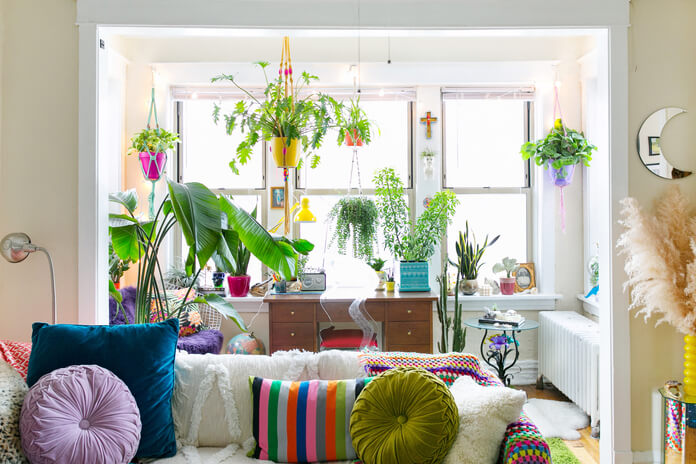Which are the Top 10 Indoor Plants?
Before discussing the top 10 indoor plants, you should understand some of the most important things. First, home plants create a feeling of tranquility, freshness and make any space look more inviting.
They can also help with air quality, provide natural lighting and bring more oxygen into the air. Indoor plants have an endless list of benefits.
They improve air quality, create a more relaxing atmosphere, and bring colour and vibrancy to the space. Indoor plants are ideal for any home and are a significant investment.
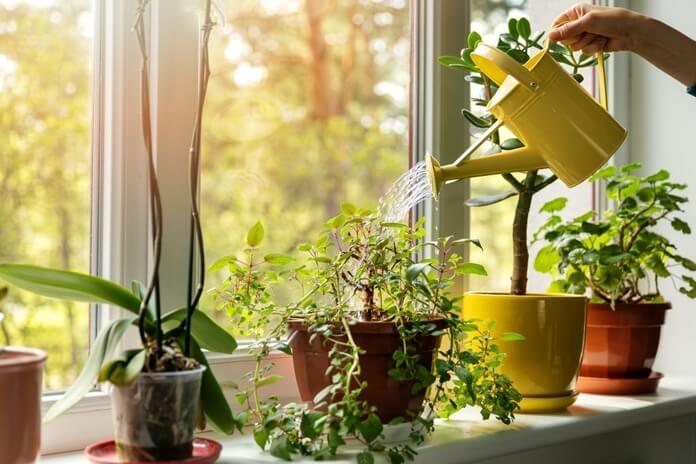
How Plants Remove Dust from Air?
Studies have shown that houseplants can remove more than 60 per cent of indoor air pollution in the environment.
Dust is a significant part of the air pollution found in homes. Dust accumulates in the air-conditioning system, on ceiling fans, and furniture.
However, you can keep your home dust-free by getting a houseplant. If you have an outdoor garden, you can still get greenery inside your home.
Houseplants are a great way to quench your thirst for greenery. They also offer a way to keep your home dust-free. One thing to note is the level of dust in your home.
If your house is full of dust, it’s going to be hard for your plants to absorb any new dust. So the leaves of these plants are designed to trap dust particles and release them.
These plants provide a larger surface area than other plants, allowing them to trap more dust. Overall, this is a great way to control the amount of dust in the air.
However, if your house is clean, your plants will be able to work their magic and trap in any new dust.
List of the Top 10 Indoor Plants
However, indoor plants are not easy to care for; many factors could affect their health and happiness, such as light, temperature, humidity, and even the type of soil you use.
Luckily, many varieties of plants are suitable for indoor conditions and require little to no maintenance.
This list includes the top 10 indoor plants which are the most common and explains the best way to care for them.
Cactus
When we talk about the top 10 indoor plants, Cactus comes on the 10th. Cactus is an indoor plant that can be a good choice for removing dust from the air.
The leaves of a cactus provide an extensive surface area. A cactus can efficiently trap dust particles and release fresh air with these leaves and efficiently release dust particles.
But, of course, Cactus are not the only plants that can trap dust particles.
Many other plants have an extensive surface area to trap dust. For example, succulents can also trap dust particles by their sticky leaves.
As a result, these plants can release fresh air and trap dust particles. Moreover, succulents can be placed near a window and enjoy natural lighting.
Cactus is a great way to beautify your home. Cactus come in all shapes, sizes, and varieties.
The most common Cactus are the commonly available prickly pears, but there are so many other types of Cactus, some of which have unique features.
One of the unique features of the prickly pear is that it has a wide and shiny leaf surface. This surface area gives the plant the ability to trap dust particles by using the process of osmosis.
This process allows the plant to absorb the dust and release fresh air. There are various house plants with large, shiny leaves that provide extensive surface area for dust to stick to, and these plants can release fresh air.
The most common plants that are used for this purpose are the Cactus.
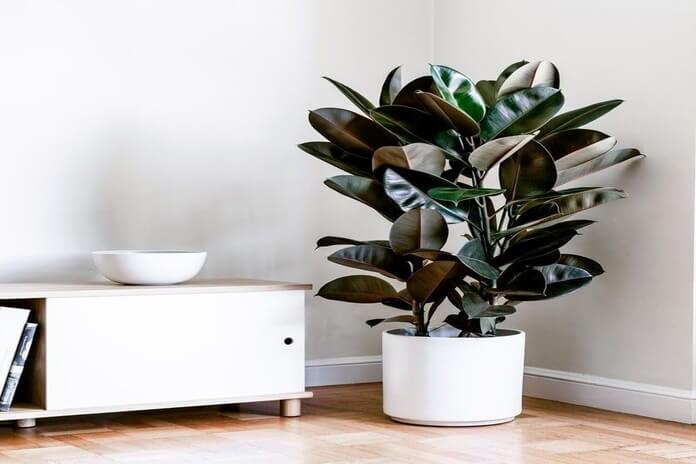
Rubber Plant
A variety of house plants can help clean your home’s air and provide a natural atmosphere. In the list of top 10 indoor plants, Rubber plants come on number 9.
One example of an excellent plant absorbing dust is a rubber plant, a very popular houseplant.
The rubber plant is a pretty choice because it has large, shiny leaves that provide extensive surface area to capture dust.
The rubber plant also has long, glossy green leaves that are highly adaptable to different surfaces in the home. It’s great for small or large spaces, and it’s a perfect plant to have in your living room, bedroom, or office.

English Ivy
Several plants are suitable for collecting dust. It is a flexible plant that can be grown indoors and outdoors.
It is a tough plant familiar with soaking up moisture and humidity from the air. However, this quality makes it a great weapon to have in your artillery against mould growth.
It is a native plant that is pretty easy to come by and hardy and adaptable to a wide range of conditions. English ivy is an excellent plant for someone to grow in a container or even on a window.
It will grow well on a window sill and in a container that has good drainage. So when we talk about the top 10 indoor plants, English Ivy comes on the 8th.
English ivy is a hardy perennial plant. It is native to temperate regions and can grow nearly 1 meter in height. It can live from 4 to 8 years. The plant has broad, deep, green-grey leaves and a thin stem.
English Ivy leaves are arranged in opposite pairs along the stem. The leaves are also pointed and have fine hairs on the edges.
It is a favourite of home gardeners, who like to grow it for its beautiful and decorative foliage in their gardens. It does not need much care, only minor pruning and water. English ivy can be grown in containers and indoors.
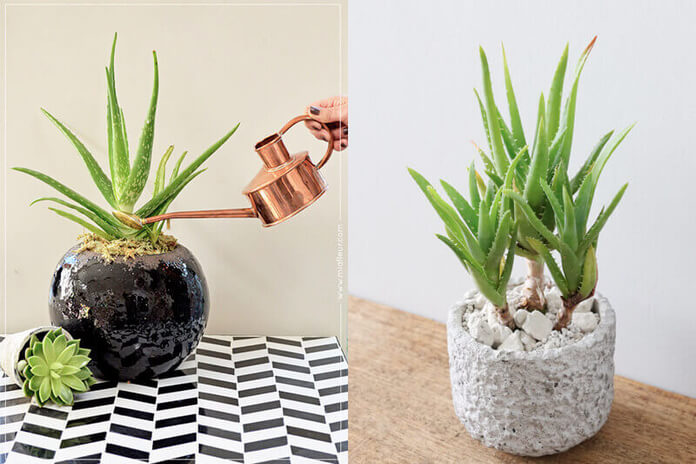
Aloe vera
When you have a plant in your home, it can do many things. For example, Aloe vera is one of the most popular plants around. It is used for medicinal purposes and has a lot of different uses.
One of the most important uses for Aloe Vera is that it can absorb and eliminate radioactive waves in the atmosphere. In addition, the Aloe vera plant absorbs carbon dioxide from the air and converts it into oxygen.
Aloe Vera is a versatile plant that is easy to grow and is available in a multitude of colours. It’s also a popular plant because of its ability to convert carbon dioxide in the air into oxygen.
In addition to that, Aloe Vera is a plant that can absorb and eliminate radioactive waves in the atmosphere. Therefore, when discussing the top 10 indoor plants, Aloe Vera comes on the 7th.
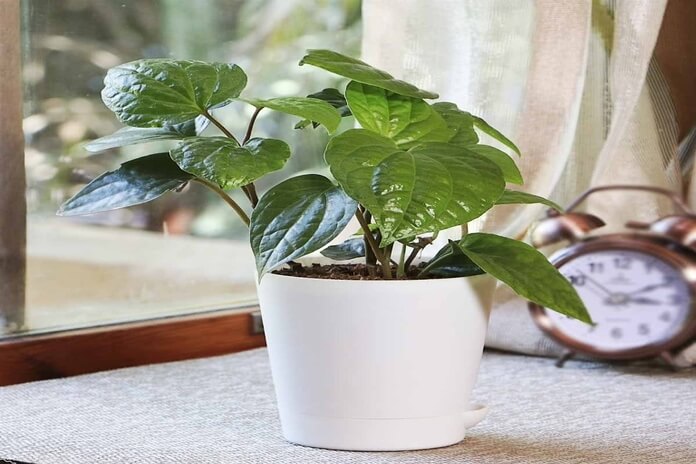
Betel Leaves
If you are unfamiliar with betel leaves, there are a few facts about this plant that might catch your attention.
It is replete with hydroxyl, a plant-based element that helps it ward off radioactive substances in the air. It may seem like a strange plant, but it is praised in many cultures for having some benefits.
If you intend to give your home a boost, you might want to consider using this plant. You might not be aware of the power of plants in absorbing electromagnetic waves, but it is worth a try.
They are also known as areca nut leaves. The plant is replete with hydroxyl, making it a popular plant used to ward off radiation in the air. When we talk about the top 10 indoor plants, Betel leaves come on the 6th.
On the contrary, betel leaves are also antibacterial and have antimicrobial properties. Therefore, the plant is considered to have medicinal purposes. In addition, the plant’s leaves are a popular item that is used as a filler in cigarettes.
Betel leaf plants are not only beautiful and full of life but are also great at absorbing radiation. The betel leaf plant is a member of the pepper family and is mainly found in Asia.

Spider Plant
Like many plants, spider plants are a tough choice for air purification. Moreover, Spider plants filter out toxins and pollutants in the air, but they can also convert harmful materials into oxygen.
Spider plants have had a lot of time to adapt to their surroundings. As a result, they can survive in a wide variety of conditions, and they are effective in removing harmful toxins from areas.
Spider plants are great for people who have allergies or other respiratory issues. They are also suitable for people who have asthma. So when we talk about the top 10 indoor plants, Spider plants come on the 5th.
There is no specific number of spider plants needed for their effectiveness, but you need to ensure that you provide enough light for your spider plants to grow.
Spider plants are known for their ability to suck up dust and pollutants. They also give off a sense of calm and peace, making them an excellent option for your home or office.
Although spider plants don’t have broad leaves like the rubber plant, their mass of foliage makes them an excellent option for collecting dust.
Over just two days, studies have found spider plants can eliminate around 90 per cent of toxins in a room. Spider plants are also good at air purification; that’s why they are mostly part of greenhouses.
Spider plants are often considered difficult to maintain, but they aren’t as fussy as you think. Once your plant is rooted, it is easy to care for.
The trick to keeping your spider plant healthy is to provide it with plenty of light and make sure it has a steady water supply. Water your plant regularly, and use a portion of water-based plant food to keep its soil hydrated.
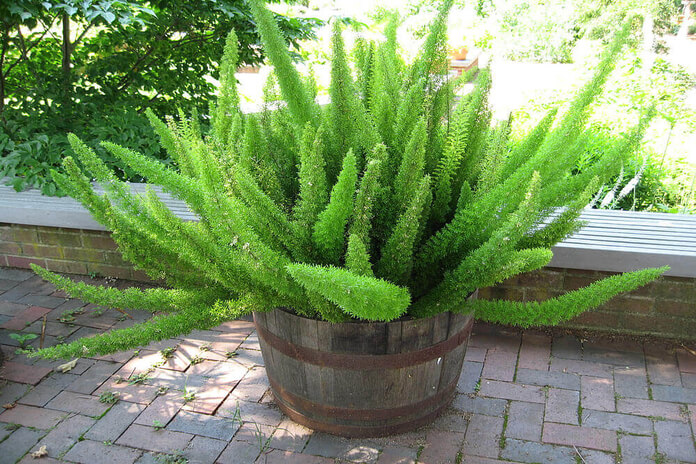
Asparagus Plant
Asparagus ferns have been around for centuries. They are one of the most popular plants in the world. The plant is not just as pretty as a pretty plant, though.
The asparagus plant is also a rich source of antioxidant properties that can keep your environment at home clear from the damages caused due to men.
The Asparagus fern has been known to keep allergy symptoms at bay and, therefore, can be an ideal remedy for allergy sufferers. So, when we discuss the top 10 indoor plants, Asparagus come on the 4th.
The Asparagus Fern is a type of fern commonly placed in greenhouses, gardens, and indoors. It is a flowering plant, so it is also an excellent option for your home décor.
One of the many reasons the Asparagus plant is so popular is it emits a soothing fragrance.
They have beautiful fronds that are usually green, but sometimes they are in brown, yellow, and even pink. Also, asparagus Fern can vary from green to white.
Asparagus Ferns maintenance is deficient. These plants are also perfect for an office setting. Moreover, they have a low-light requirement.
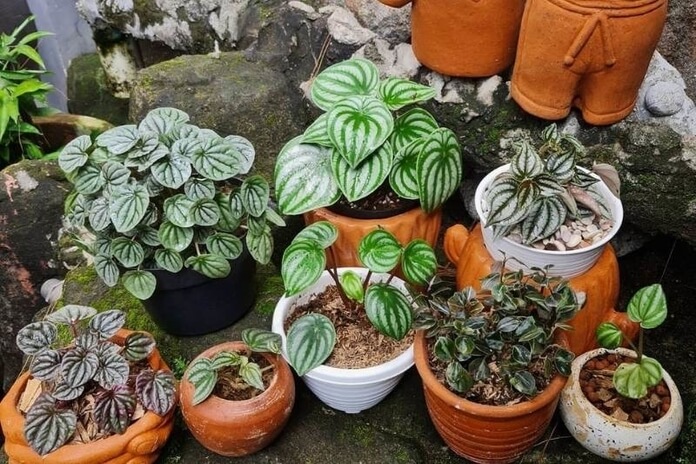
Peperomia Plant
It also known as heartleaf, are an excellent option for an indoor plant. Peperomia is easy to grow and maintain, and they look great.
These plants are besides simple to care for. Moreover, they have an enduring fragrance. They have a long history of medicinal properties, good for your health.
They are also an excellent option for a gift since they are colourful and their flowers are a happy surprise. When discussing the top 10 indoor plants, the Peperomia plant comes on the 3rd.
Peperomia is a popular plant that is good for your air quality. This plant loves to absorb carbon dioxide and release oxygen.
It cleans the air of toxins, like formaldehyde. Peperomia is a low-maintenance plant. You can keep it in a low-light environment, making it easy to take care of.
It is also heat-resistant, which means it doesn’t require water as regularly as other plants. When it comes to this plant, the only thing needed is a little water every once in a while. Peperomia is a type of succulent plant.
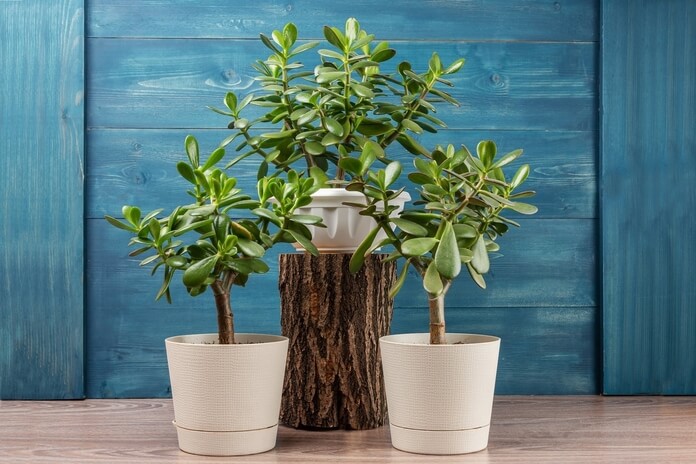
Jade Plants
In the list of top 10 indoor plants, Jade plants come on the 2nd. This is because many plants can survive for long periods without getting any water; one of them is the Jade Plant. This plant can do this because it has unique leaves called trichomes.
These trichomes are round, and they are made of hydrophobic polymers, meaning that they are not able to absorb water.
Also, this plant has a jade-like colour, hence its name. It is not the only reason this plant can survive so long without any care. The plant also has a thick, fleshy stem that can hold water, and it cannot wilt or dry out.
Jade Plants are native to China and have been part of traditional Chinese medicine for decades. Jade plant can grow up to eight feet tall and has a sappy, succulent texture.
If you’re looking to create a lush and green landscape in your home, the Jade Plant is an attractive option. The plant is tolerant of low-light conditions, perfect for small spaces.
One downside to the plant is that it can be difficult to water and can sometimes survive more than a month with no attention whatsoever. If you decide to give it water, it starts to rehydrate and grow.
Setting up a courtyard is an art. From design inspiration and inspired planting to more minor updates, our front courtyard design ideas will turn your space into one you’ll love.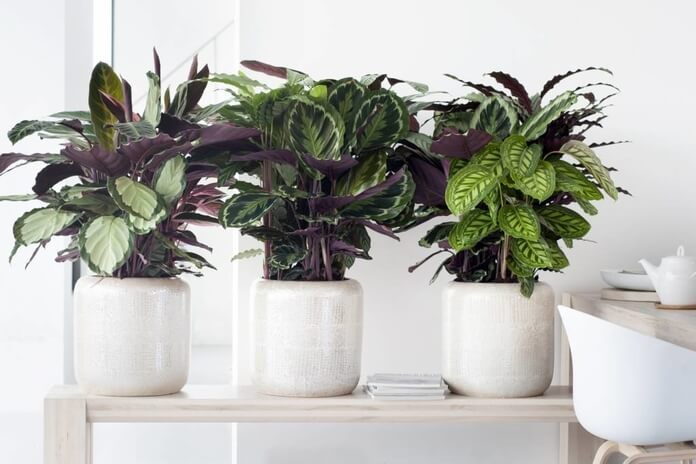
Calathea Ornata
Prayer plant is another name of Calathea Ornata because of its fragrance. The leaves are a mix of orange, brown and they come in a variety of shapes and sizes.
Calathea, add a splash of colour to a home or indoor space. You can gift it too because it is a beautiful plant that is not difficult to maintain.
You can present it to somebody who is seemed for a stunning, striking plant that is trouble-free to care for. When discussing the top 10 indoor plants, Calathea Ornata comes on the 1st.
Calathea Ornata is a beautiful plant that looks great on a pot or shelf. This plant is sure to add a touch of beauty to your home or office because of its attractive leaves and vibrant colours.
If you are willing to grow a stunning plant, Calathea Ornata is the best option.
Interior design is the talent and knowledge of ornamental the inner of a building to attain a better and more aesthetically lovely environment for the people using the space.

